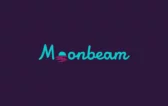Last week FTX featured a severe crisis, which resulted in FTX filing for bankruptcy and the resignation of its CEO at the time, Sam Bankman-Fried. He even apologized on Twitter, taking the blame for the company’s liquidity problems.
The company’s bankruptcy has left more than 3 million customers, including investment funds, global personalities, and companies, with no idea how to recover their investments.
What happened to FTX?
The FTX ecosystem consisted of 130 companies and managed over US$ 50 billion in assets, backed mainly by the FTT token. Rumors of mismanagement of funds began circulating starting November 2, after CoinDesk released a balance sheet that supposedly showed that a large portion of Alameda’s US$14.6 billion in assets was held in FTT.
There was a sharp drop in the value of the FTT, which prompted investors to rush to withdraw their valuables from the exchange. Binance announced it would buy the company’s operations on November 9, but pulled out the next day, claiming that “FTX’s problems were beyond its ability to help”.
According to a Reuters report, at least US$1 billion in customer funds have disappeared from the FTX platform.
Reuters reported that sources said Bankman-Fried had allegedly transferred US$ 10 billion in client funds from the exchange to the Alameda Research trading.
John Ray, who took over as FTX’s CEO, stated that there had been “unauthorized access to certain assets”, citing investigations of a possible hacker attack.
In a statement, FTX explained that “immediate relief from Chapter 11 of the United States Bankruptcy Code provides the FTX Group with the opportunity to assess the status of assets and develop a process to maximize recoveries for stakeholders.”
The situation has interfered with the crypto market, bringing increased volatility. Bitcoin, for example, reached US$ 16,000 last Saturday, November 12. In addition, the case has again raised the importance of crypto assets regulation and market maturation.
The crisis did not affect Transfero
Although the price of BRZ, a stablecoin pegged to the Brazilian real, oscillated, Transfero was not affected by the FTX crisis. This is because, according to Thiago Cesar, CEO of the company, Transfero holds the custody of the assets that back the BRZ.
In a statement sent to its clients, Transfero reinforced its operational strength and stressed that it has no significant exposure to FTX, as it maintains its custody of digital assets with Fireblocks, the largest and most respected crypto asset custodian in the world.
According to Cesar, the loss of BRZ parity occurred because there was a run on the other exchanges where the stablecoin is listed, in which many users issued sell orders below R$ 1. But the situation is now normalized.







